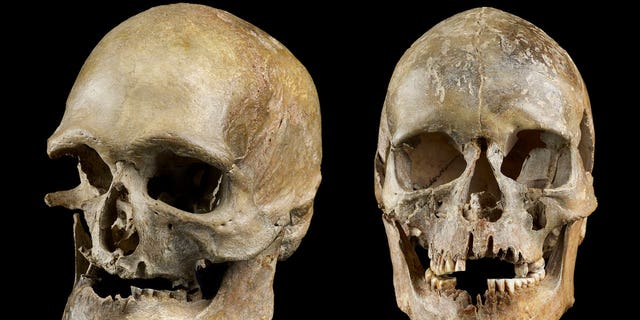close 
Fox News Flash top headlines for March 1
Fox News Flash top headlines are here. Check out what’s clicking on Foxnews.com.
New research reveals that the hunter-gatherer people who dominated Europe 30,000 years ago sought refuge from the last Ice Age in warmer places, but only those who sheltered in what is now Spain and Portugal appear to have survived.
Using new genetic analysis of prehistoric human remains, scientists were able to trace the fate of the Gravettian culture, a term used to describe the people who once roamed Europe and produced distinctive tools and art such as the voluptuous ‘Venus’ figurines found at ancient sites across the continent.
The study, published Wednesday in the journal Nature, highlights the impact that climate change and migration had on the early inhabitants of Europe. It suggests that those who lived in what is now Italy when the ice expanded southward some 25,000 years ago appeared to have found themselves in a dead end compared to their cousins who lived in region that now covers parts of southern France, Spain and Portugal.
‘SNOWBALL EARTH’ DISCOVERY: EXPERTS REVEAL HOW LIFE SURVIVED PREHISTORIC ICE AGE
Those who went west survived the worst of the Ice Age, known to scientists as the last glacial maximum, said Cosimo Posth, a researcher at the University of Tuebingen who led the study.
“To our big surprise, in Italy the population that was present before the last glacial maximum completely disappears,” said Posth. “They didn’t make it.”

Remains found in Europe dating back to the Ice Age paint a clearer picture of where human life survived the era. (Juergen Vogel/LVR-LandesMuseum Bonn/Max Planck Institute via AP)
Genetic analysis of individuals from Italy after the last Ice Age shows the dark-skinned, dark-eyed Gravettian population was replaced by newcomers from the Balkans, who brought blue eyes and a touch of Near Eastern ancestry with them.
The researchers analyzed 116 new genetic samples they added to 240 ancient specimens already known, covering a span from about 45,000 to 5,000 years ago.
The Gravettians who survived the Ice Age in Spain, meanwhile, mixed with migrants from the east as Europe warmed again almost 15,000 years ago and then swiftly repopulated the continent from Iberia to Poland and the British Isles, dominating it for thousands of years.
1.8M-YEAR-OLD HUMAN TOOTH FOUND BY ARCHAEOLOGISTS
The genetic footprint of the Gravettians can be found in the last Spanish hunter-gatherer populations until the arrival of the first farmers, who migrated to Europe from Anatolia some 8,000 years ago, said Posth.
In an accompanying commentary published by Nature, Ludovic Orlando of the Center for Anthropobiology and Genomics in Toulouse, France, said the study showed how climate change affected populations in Europe and that ancient human cultures weren’t always ethnically homogenous.
Orlando, who was not involved in the study, said the findings also demonstrate how fluid Europe’s genetic history was. “No modern population can claim a single origin from the human groups that first became established on the continent,” he said.
CLICK HERE TO GET THE FOX NEWS APP
Posth hopes to delve deeper into the history of ancient migration in Europe, particularly the mysterious people who arrived from the Balkans around the time of the last glacial maximum.
